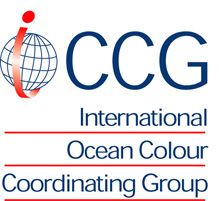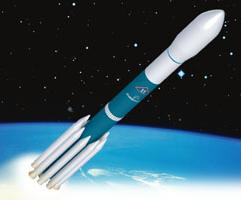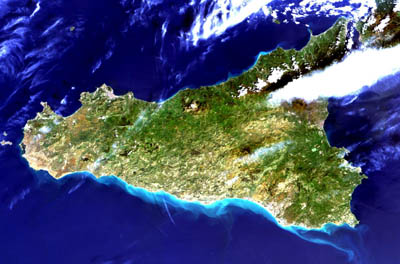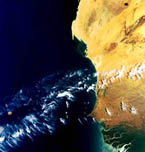

|
 The IOCCG is pleased to announce a new Fellowship Programme, which offers the opportunity for young scientists from developing countries to conduct hands-on research, or to receive in-depth training, at a foreign institute. The fellowship is open to scientists, technicians, graduate students, and Post-Doctoral Fellows involved in any aspect of ocean-colour research relevant to the aims and objectives of the IOCCG. Funds will be provided for the successful applicant(s) to travel to an institute outside their home country for a short period (1-2 months), to work with experts in the field. For further details refer to IOCCG Training and Education webpage.
The IOCCG is pleased to announce a new Fellowship Programme, which offers the opportunity for young scientists from developing countries to conduct hands-on research, or to receive in-depth training, at a foreign institute. The fellowship is open to scientists, technicians, graduate students, and Post-Doctoral Fellows involved in any aspect of ocean-colour research relevant to the aims and objectives of the IOCCG. Funds will be provided for the successful applicant(s) to travel to an institute outside their home country for a short period (1-2 months), to work with experts in the field. For further details refer to IOCCG Training and Education webpage.
 Delta II launch vehicle for Aqua
Delta II launch vehicle for AquaThe launch of the second Moderate Resolution Imaging Spectroradiometer (MODIS) aboard the Earth Observing System's (EOS) Aqua satellite has been rescheduled to April 26, 2002. Aqua will be flying in an orbit that covers the globe every 16 days. It will provide a six year chronology of the planet and its processes.
SeaWiFS Reprocessing Update In its effort to reprocess the SeaWiFS data-set, the project office is currently running a series of incremental tests to quantify the effects of a number of proposed updates that are being considered for the next reprocessing. The ocean-colour community will be notified when the results of these changes are posted on a special webpage dedicated to the reprocessing. In the past weeks the project office has taken care of most of the algorithmic-related improvements. Also, work has been done on some very detailed refinements to a few of their methodologies. They have now updated the long-term SeaWiFS calibrations to account for a very small (less than 0.35 per cent over 1000 days) change in band 3 that was not taken into account previously.
SeaWiFS Publications
|
Think twice before interpreting satellite images James Acker (Goddard DAAC) takes a new look at SeaWiFS satellite images off the coast of Namibia, in his latest Science Focus! article. Cloudy milky-white features previously attributed to a bloom of coccolithophorids, have been shown to be caused by clouds of sulfur particles. See A bloom by any other name… might never be a bloom at all for the full story.
 MERIS image of Sicily, Italy taken on March 23, 2002. Click on the photo to see the larger image. Image courtesy ESA
MERIS image of Sicily, Italy taken on March 23, 2002. Click on the photo to see the larger image. Image courtesy ESAThe Medium Resolution Imaging Spectrometer (MERIS) onboard the ENVISAT-1 satellite was launched successfully on March 1, 2002 from the European Space Agency's (ESA) Space Center in Kourou, French Guiana. Spectacular images are already available from MERIS, and one of the first observations show a huge phytoplankton patch produced by the "upwelling" mechanism along the Mauritanian coast. The unprecedented resolution (300 m) allows fine scale structures to be detected.  The sensor will also provide information on carbon fixation through photosynthesis within
the Earth's ocean, to increase our understanding of the carbon cycle. The sensor will also provide information on carbon fixation through photosynthesis within
the Earth's ocean, to increase our understanding of the carbon cycle.The first MERIS observation has captured the huge phytoplankton patch produced by the "upwelling" mechanism along the Mauritanian coast.Image courtesy, ESA.
The deadline for accepting abstracts for SPIE's conference on Remote Sensing of the Atmosphere, Ocean, Environment, and Space has now been extended to April 25, 2002. The conference will be held in Hangzhou, China from October 23-27, 2002. This conference will focus on applications of ocean-colour data from medium-resolution ocean-colour sensors and the Asia-Pacific marine environment, including data analysis techniques, calibration and evaluation, and studies of the open oceans, estuaries, and coastal regions. Additional details available on the conference website.
Several new images from the MERIS and the MODIS ocean-colour sensors have been added to the IOCCG ocean-colour image gallery. Images can be viewed by continent or by sensor.
|
|
Material for possible inclusion in the IOCCG Newsletter should be submitted to the Project Scientist. If you would like to be placed on the IOCCG News mailing list, and receive a brief summary of the latest news by e-mail (approximately once every 2 months), please send an e-mail with 'subscribe' in the subject line to subscribe@ioccg.org.To unsubscribe from the IOCCG News mailing list please send a message with 'unsubscribe' in the subject line to unsubscribe@ioccg.org.
|
|
|
|